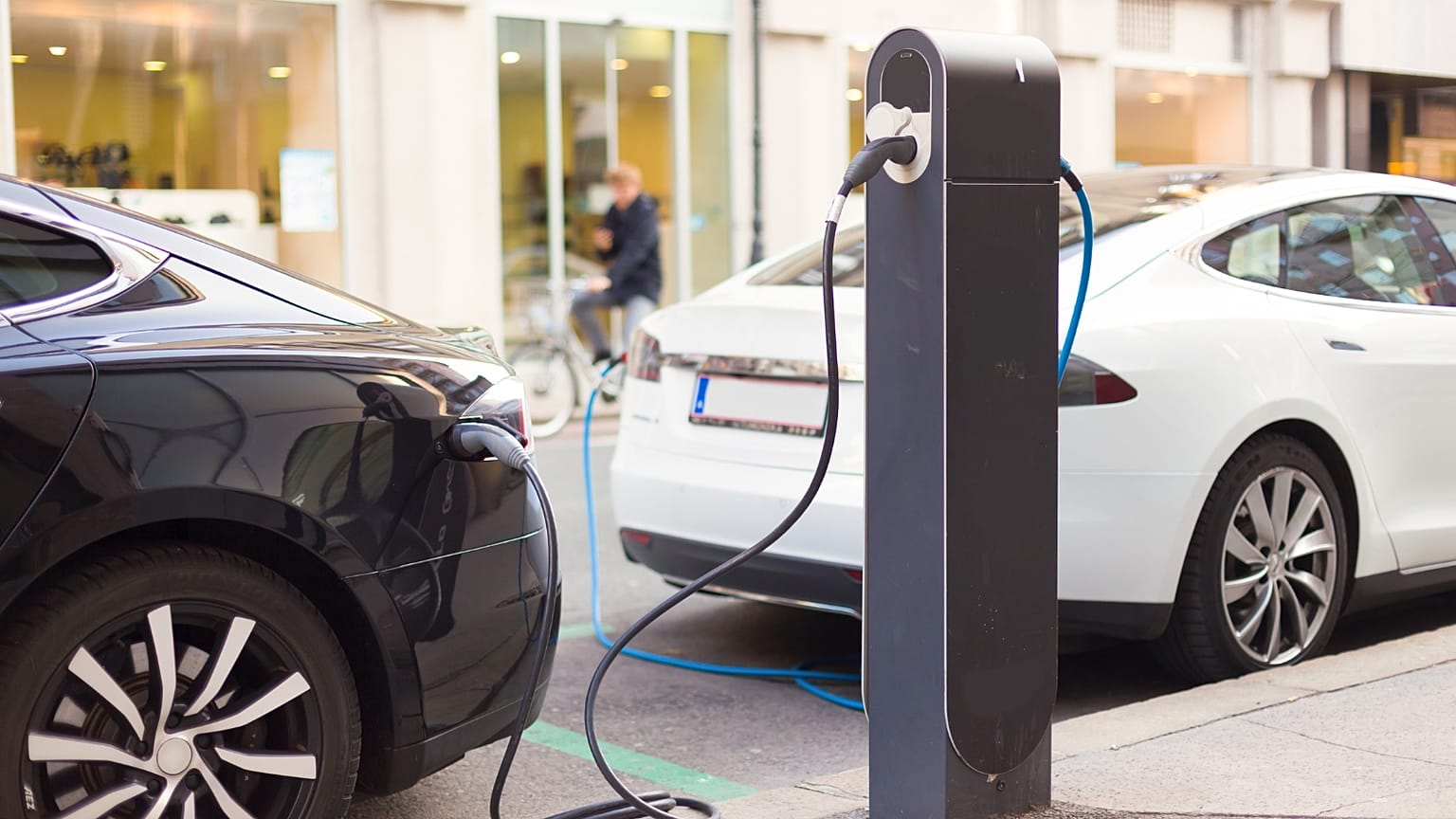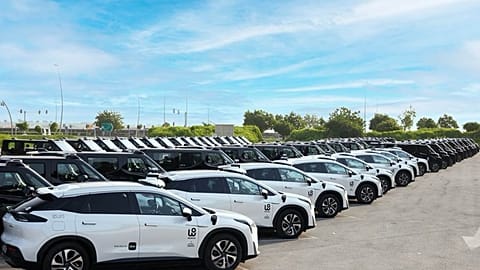The dramatic increase in the number of EVs in Europe is promising a move away from fossil fuel cars. But access to charging is a significant concern.
Battery electric vehicles (BEVs) are becoming increasingly popular in Europe. In 2022, the number of fully electric passenger cars in the EU increased by 58 per cent compared to 2021 – from 1.9 million to 3.1 million.
Between 2019 and 2022, this number soared by more than 400 per cent.
This is a hugely significant step for energy in terms of transitioning towards net zero as the impact of climate change has been particularly evident with increasing temperature changes in recent years.
While electric passenger cars and other electric vehicles will be key for decarbonising the transport sector, a more expansive charging infrastructure is needed to encourage uptake.
"Access to charging is a significant concern," a report from the Organisation for Economic Co-operation and Development (OECD) published in June underlines.
A third of respondents in six European countries - France, the UK, Switzerland, Belgium, Sweden and the Netherlands - reported that there were no charging stations for electric cars within 3 km of their homes, according to the OECD’s 2022 Environmental Policies and Individual Behaviour Change Survey.
This rate ranged from 22 per cent in the Netherlands to 43 per cent in France, closely followed by Belgium (42 per cent).
On the other hand, 24 per cent of respondents in these European countries said that they did not know whether charging stations were available close to their homes or not.
A quarter of them reported that there are charging stations available at home, at work or in car parks, with another 18 per cent stating that charging stations for electric cars were available within 3 km of their homes.
Some evidence suggests that range anxiety and other concerns about electric car use largely dissipate when a vehicle owner makes the switch to an electric car, according to the OECD’s recently published 'How Green is Household Behaviour? Sustainable Choices in a Time of Interlocking Crises' report (which was based on the 2022 survey mentioned above).
Public charging infrastructure is rapidly growing in the EU
The extent of the public charging infrastructure is vital in increasing the prevalence of EVs. Charging infrastructure deployment has considerably accelerated in recent years, according to data from ChargeUp Europe.
In 2022, the number of public charging points in the EU increased by 48 per cent compared to 2021, from 320,000 to 475,000. Between 2022 and 2022, it rose by more than 150 per cent.
The Netherlands leads in public charging infrastructure
Public charging infrastructures vary widely across Europe. The Netherlands is the leader by far in several metrics; charging points per 100,000 inhabitants is one significant indicator when gauging a country's capacity.
In 2022, the Netherlands had 577 charging points per 100,000 inhabitants, followed by Luxembourg (308), Austria (208), and Sweden (228), according to ChargeUp Europe.
Denmark (200), Belgium (172), and France (107) also reported more charging points than the EU average (106 per 100,000 inhabitants).
There were 99 charging points in Germany, one country in particular that has been steadily increasing its investments in this sector.
Twelve EU countries had fewer than 40 charging points per 100,000 inhabitants.
One-fourth of all EU charging points are in the Netherlands
In 2022, the Netherlands had the highest number of public charging points at 111,721, followed by Germany (87,674) and France (83,317).
This suggests that 24 per cent of all public charging points in the EU are located in the Netherlands, and the combined share of these three countries was 59 per cent of the total for 2022.
No other countries reported more than 50,000 charging points.
While the number of public charging points rose in the EU from 320,000 to 475,000 between 2021 and 2022, some countries also improved their infrastructures, playing a key role in this overall increase.
France installed more than 50,000 charging points in 2022
In 2022, the number of public charging points in France rose from 30,000 to 83,317 compared to 2021, with the installation of 53,317 additional charging points.
Spain similarly reported an increase of 28,480, rising from 5,900 to 34,380 charging points.
The sizes of the increases were 22,074 in Germany and 11,784 in Austria.
Countries with the lowest numbers of charging points also showed significant growth in their overall percentages, such as 264 per cent in Bulgaria and 201 per cent in Slovakia.
The graph above also indicates decreases in the public charging infrastructure in some countries.
This is a result of either data inconsistencies or a larger share of charging stations having been previously identified as publicly accessible and later reclassified as private charging stations, according to data from ChargeUp Europe.
Workplace charging plays a key role
ChargeUp Europe suggests that charging at one’s workplace is the most popular way to charge electric vehicles away from home.
Access to convenient and affordable charging at work may be especially important for encouraging people in multifamily homes (such as apartment blocks) and those without a dedicated place for charging to become drivers of electric vehicles.
As cars are often parked at work for long periods of time during the day, workplaces are ideal locations for smart charging, as well as benefiting from cheaper electricity tariffs and so on.
Communicating what infrastructure coverage already exists, as well as any planned developments in the future and the timeframe for their delivery could help to boost public awareness and help households consider future electric vehicle purchases, according to the OECD report.
Which countries are selling the most electric passenger cars?
The share of fully electric passenger cars among newly registered passenger cars is an important indicator demonstrating how well countries are progressing towards zero emissions.
In the EU, 12.1 per cent of all newly registered passenger cars were fully electric in 2022, according to ACEA data.
Norway was an outlier with its share of fully electric cars among all newly registered cars being 4 out of 5 (79 per cent).
Other Scandinavian countries are also doing particularly well in moving away from fossil fuel energy.
Norway was followed by neighbouring Sweden (33 per cent), and then Iceland (31 per cent), the Netherlands (24 per cent), Denmark (21 per cent) and Finland (18 per cent).


















